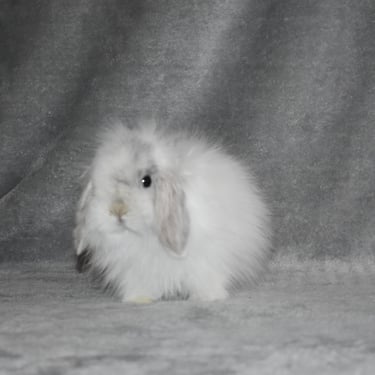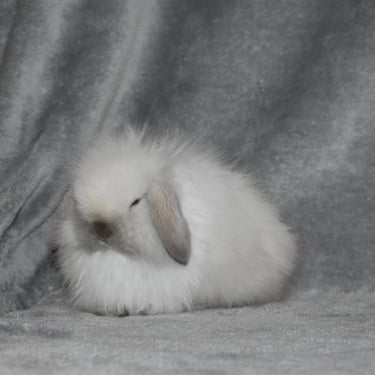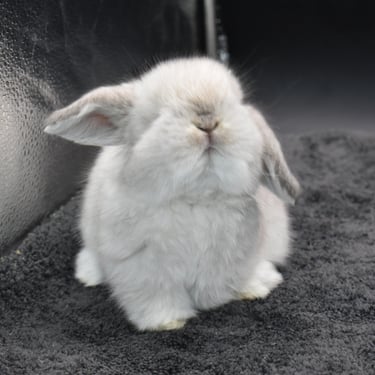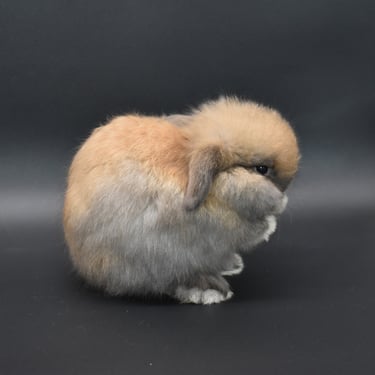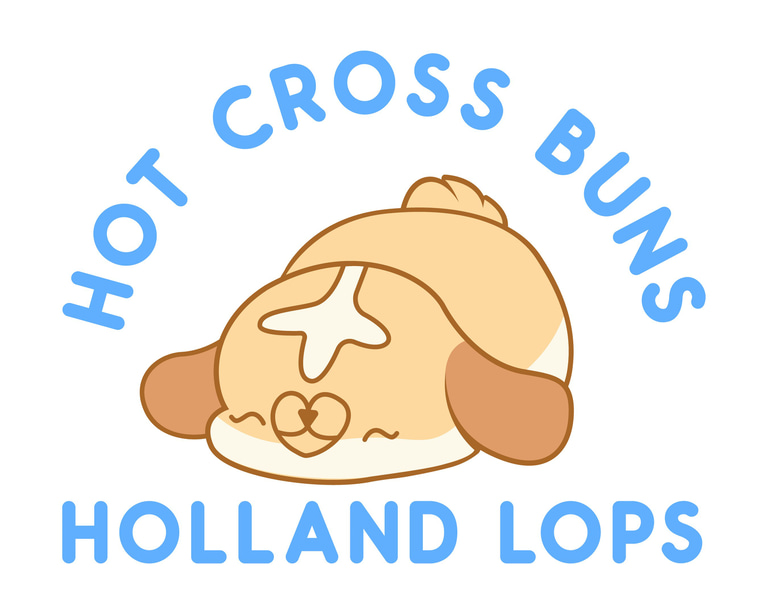What Is a Fuzzy Holland Lop?
A brief history about how fuzzies came into existence as part of the Holland Lop breed.
Amy J.
8/19/20253 min read
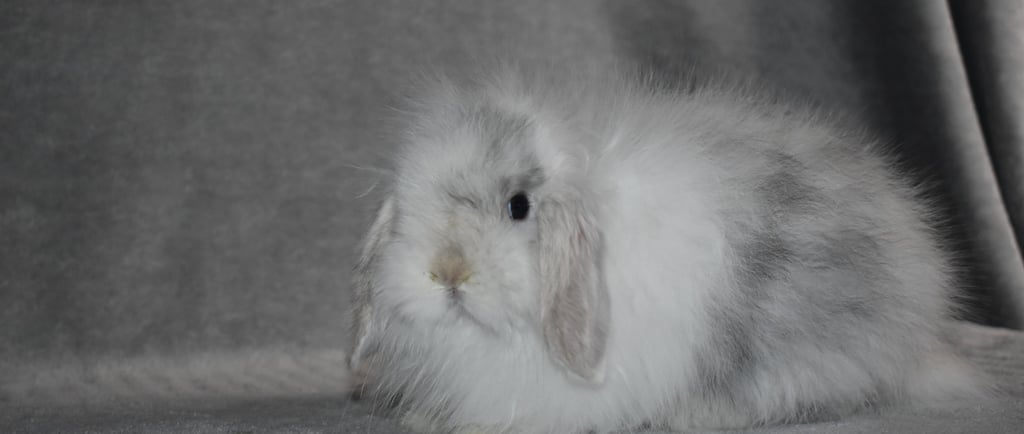

Before we jump into what a fuzzy Holland Lop is, we need to understand the different coat types there are in the world of rabbits. I had to consult my daughter Evelyn and her trusty 4-H Rabbit Resource Handbook for help in remembering all of them. There are four "basic" fur types that all rabbits have: "normal", satin (has a very unique sheen to the fur), rex (extremely short fur that stands upright and has a velvety feel), and wool (very long hair fiber, as any of the Angora breeds have).
The "normal" group is further subdivided into three types: rollback, flyback, and standing. This subdivision has to do with the way the fur behaves when it is brushed backwards on the rabbit's body. If it stands erect and needs to be smoothed back in the proper direction, it is standing. If it snaps back into place very quickly, the coat is flyback. If the fur undulates back into position a bit more slowly than flyback, it is called rollback.
When the Holland Lop rabbit was being developed as a unique breed in the 1950's, the desired fur type was rollback. They achieved this, but the breed was then only available in solid colors and the broken pattern was desired. Among those working to develop the breed, the decision was made to breed the Holland Lop with the English Spot Rabbit to introduce the broken pattern. This worked very well except for one undesired complication: the English Spot Rabbit has a flyback coat, rather than the desired rollback and the flyback proved to be dominant in the offspring born to the Holland Lops. In order to rectify this problem, the breed developers put their heads together and decided that the best way of keeping the broken pattern and the rollback fur would be to introduce the French Angora to the gene pool. The normal fur gene (written as uppercase L in a rabbit's genotype) was dominant over the recessive woolly Angora gene (written as lowercase L). This proved to be a good solution in developing the desired characteristics for the Holland Lop, however, that recessive wool gene continues to rear its head, leading to babies that have the wool gene being expressed.
Fuzzies, as they are affectionately called, look identical to their littermates until they reach 4-5 weeks of age and their coats become longer and puffier. At that point, we know they are fuzzy Holland Lops. They tend to have incredibly sweet personalities and very laid-back demeanors. For someone who has ample time to spend on their grooming needs, they can be the ideal pet.
Whenever two Holland Lops are paired for breeding, we don't know if they carry the recessive gene unless they produce a baby who grows the wooly coat. Hypothetically, we could have twenty litters using the same pair of rabbits and never have a single fuzzy until the last litter, so the recessive gene continues to be passed down to subsequent generations. When a fuzzy suddenly appears, we know both parents have the gene and can make a note of it on the genotype. We try to avoid breeding two known carriers of the wool gene. We went two and a half years without a single fuzzy Holland Lop and then, with the addition of Sullivan in our rabbitry, we now know that both he and our doe Penelope carry the recessive gene. Although their babies, Driftwood and Sand Dollar are sweet as can be, we do try to avoid pairings that we know could result in fuzzy babies because they are generally more difficult for us to place.
To add to all of this, there is a separate breed recognized by the American Rabbit Breeders Association (ARBA) called the American Fuzzy Lop, which was developed from fuzzy Holland Lops and French Angoras. They look virtually identical, and have nearly the same showing standards and genetics. A fuzzy Holland Lop cannot be shown as a Holland Lop because it would be disqualified due to its wool coat, as the normal, rollback coat is the breed standard. An American Fuzzy Lop that looks identical to the fuzzy Holland Lop can be shown and it can do well on the show table because it falls under the standards for the American Fuzzy Lop breed. I'm often baffled by this and have even heard murmurings of people showing fuzzy Hollands as American Fuzzy Lops by fudging a pedigree and the judges can't tell the difference. Isn't it amazing that the characteristics which are viewed as being negative for one breed, become desired characteristics for another? This is one of the reasons new breeds are always being developed.
Pictured below are our four most recent fuzzy Holland Lops: HCB's Howard (now named Nestor), his litter mate HCB's Greta (now named Aries - about 7 weeks old in these pictures, which were taken in early 2023.) Next are our current fuzzy babies at five weeks of age, HCB's Sand Dollar (baby doe) and HCB's Driftwood (baby buck, who will be available for matching on 8/22/25.
